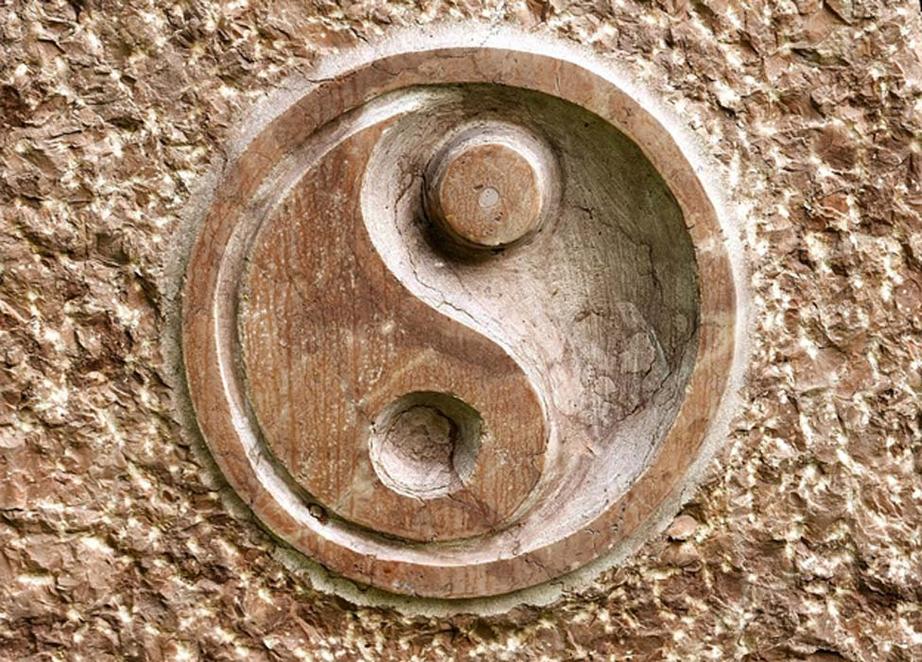A legendary symbol born from chaos: the philosophy of Yin and Yang
The complementary nature of Yin and Yang are perhaps best illustrated by the iconic black-and-white yin-yang symbol. Yet, the philosophy behind the concept can apply to many things. The ancient symbol has been a foundational aspect of Chinese philosophy since at least the third century BC, perhaps even longer. From ancient bone oracles to yoga studio kitsch, Yin and Yang continue to hold meaning for people around the world.
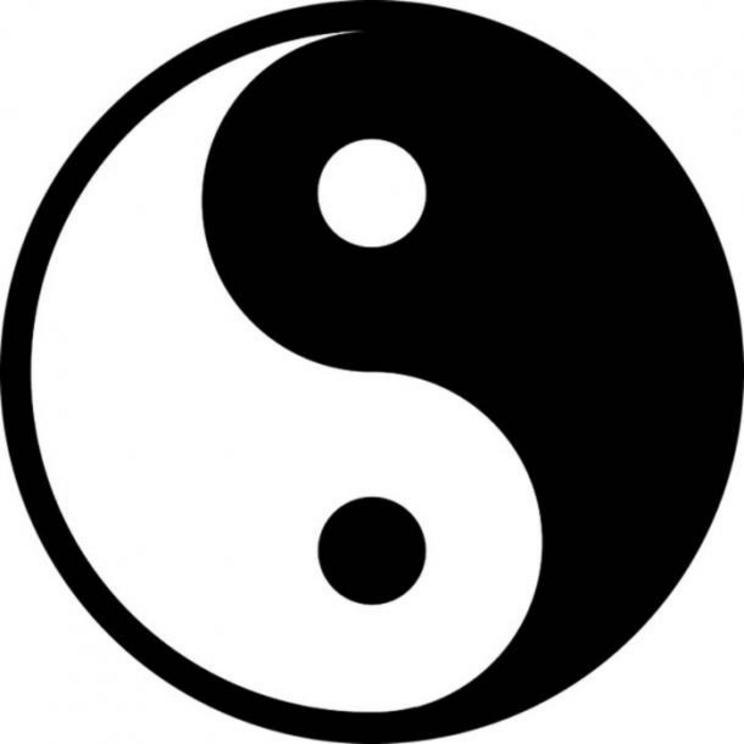 The well-known black and white version of a yin-yang symbol.
The well-known black and white version of a yin-yang symbol.
Legendary and Historical Beginnings of Yin and Yang
According to legend, yin and yang were born from the same chaos that would eventually create the universe. As the elements coalesced, yin and yang formed the center of Earth. By coexisting in perfect harmony and balance, yin and yang allowed for the birth of Pangu (the first human) as well as Fuxi, Nuwa, and Shennong (the first gods). The myth states that yin and yang continue to coexist in blissful harmony at the center of the earth.
 A legend says yin and yang coexist at the center of the earth.
A legend says yin and yang coexist at the center of the earth.
Historically, the origins of yin and yang are rather more mundane. The earliest evidence of the yin and yang symbols appear on various animal skeletal remains used in China for divination. These oracle bones have been used at least as early as the 14th century BC, but the earliest evidence we have today of yin and yang dates to the 3rd century BC.
For divination purposes, yin and yang served as simple indications of natural phenomena. Yin represented night, or lack of sunlight; yang represented day, or lack of darkness. According to the earliest dictionary of Chinese characters, dating to 100 AD, “yin refers to ‘a closed door, darkness and the south bank of a river and the north side of a mountain.’ Yang refers to ‘height, brightness and the south side of a mountain.’ (Wang, 2017)
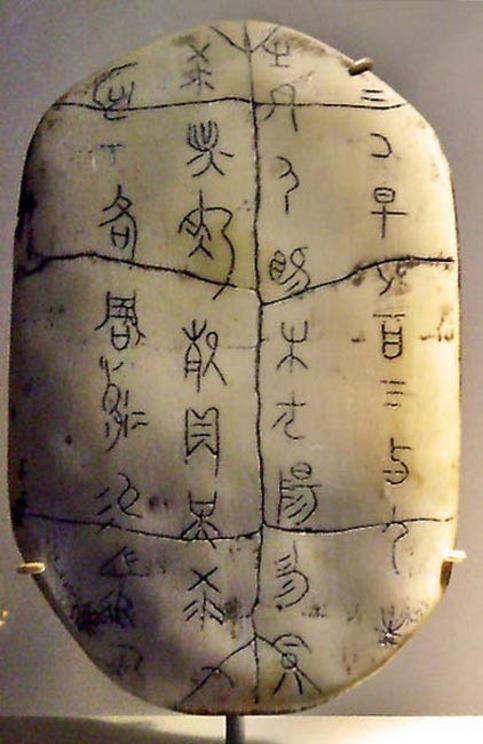 Replica of an ancient Chinese oracle bone.
Replica of an ancient Chinese oracle bone.
These ordinary definitions lend themselves to conceptual extrapolation. For example, in a peasant community, when the sun went down, the people rested - so yin became associated with rest and passivity. In another example, the sun is hot and so yang becomes associated with fire. It should be pointed out that these concepts were not used together.
The earliest known instance of yin-yang is in the Shijing (Book of Songs), a collection of Chinese poetry compiled between the 11th and 7th centuries BC.: “Viewing the scenery at a hill, looking for yin-yang. This indicates that yang is the sunny side and yin is the shady side of the hill. This effect of the sun exists at the same time over the hill.” (Wang, 2017) While in hindsight this verse may seem filled with philosophical meaning, at the time it most likely was just a poetic turn of phrase.
The First Known Philosophical Yin-Yang
The philosophical yin-yang first appeared during the Han Dynasty; but it really came into its own during the Zhou Dynasty when it became associated with the concept of qi (vital energy). Seizing on this new metaphysical worldview, Chinese philosophers, such as Confucius and Lao Tzu, expounded on the various attributes of yin and yang. In general, the Confucians preferred the fiery yang while the Taoists preferred the serene Yin.
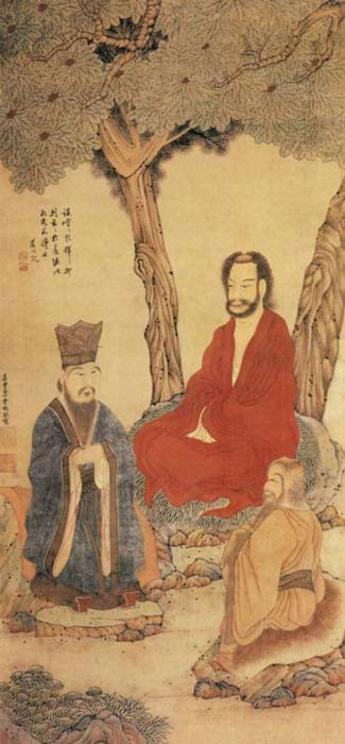 Confucius Lao-tzu and Buddhist Arhat. (??)
Confucius Lao-tzu and Buddhist Arhat. (??)
The Ancient History Encyclopedia provides contemporary understandings of yin and yang.
“Yin is feminine, black, dark, north, water (transformation), passive, moon (weakness and the goddess Changxi), earth, cold, old, even numbers, valleys, poor, soft, and provides spirit to all things. Yin reaches its height of influence with the winter solstice. Yin may also be represented by the tiger, the color orange and a broken line in the trigrams of the I Ching (or Book of Changes). Yang is masculine, white, light, south, fire (creativity), active, sun (strength and the god Xihe), heaven, warm, young, odd numbers, mountains, rich, hard, and provides form to all things. Yang reaches its height of influence with the summer solstice. Yang may also be represented by the dragon, the color blue and a solid line trigram.” (Cartwright, 2012)
Essentially, yin-yang conveys the complicated dualities of life and the paramount need for balance and moderation. Yin, yang, and yin-yang are still being pondered and discussed the world over by Taoists, Buddhists, Vedantists, Yogis, and students of Traditional Chinese Medicine.
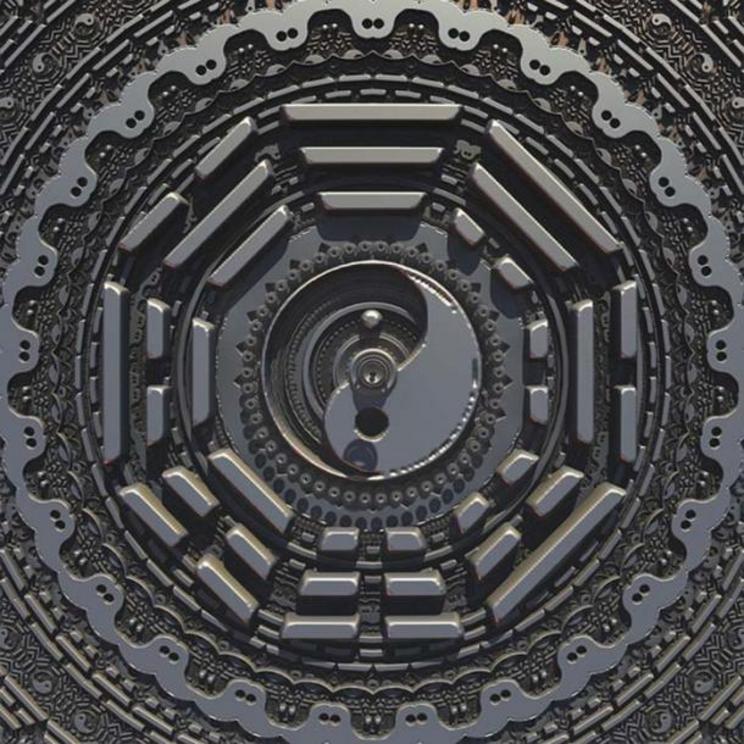 A modern interpretation of the yin-yang symbol.
A modern interpretation of the yin-yang symbol.
Resources:
Cartwright, Mark. “Yin and Yang.” Ancient History Encyclopedia, 26 Nov. 2012, www.ancient.eu/Yin_and_Yang/
Wang, Robin R. “Yinyang (Yin-Yang).” Internet Encyclopedia of Philosophy, 2017, www.iep.utm.edu/yinyang/

